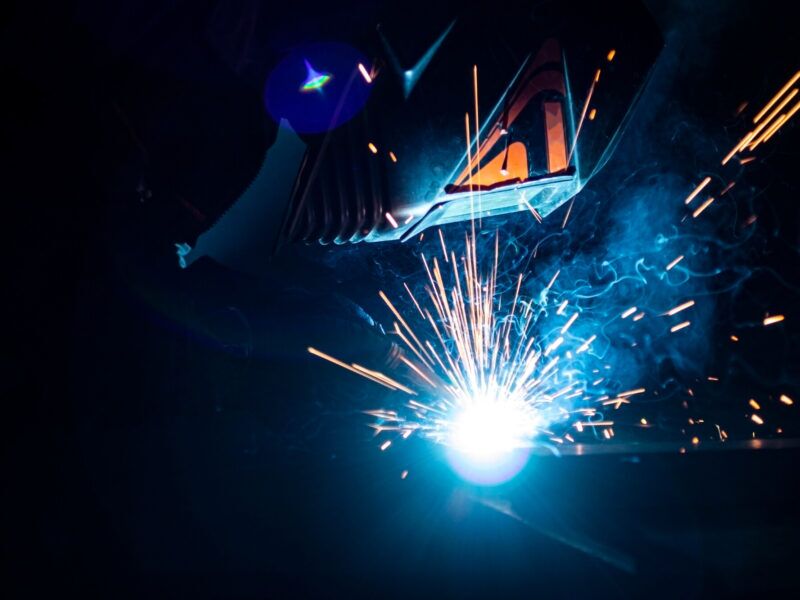Step-by-Step Overview to Preventing Weld Undercut in Different Metals
A Comprehensive Overview to Identifying, Stopping, and Mending Undercut Welding Problems in Your Welding Projects
In the realm of welding, experiencing undercut concerns is a typical difficulty that can jeopardize the architectural honesty and overall high quality of your welding jobs. Recognizing the origin behind undercut welding, being able to accurately detect it in your welds, and carrying out effective preventative procedures are crucial abilities for any kind of welder. Furthermore, having the knowledge and techniques to rectify undercut problems when they do take place can make a considerable distinction in the last result of your welding undertakings. Stay tuned as we check out the crucial components of determining, preventing, and repairing undercut welding issues, giving you with valuable insights and techniques to boost your welding skills to the next level.
Typical Root Causes Of Undercut Welding
Undercut welding, an usual concern in welding procedures, can be brought on by various aspects that require to be thoroughly recognized and resolved to guarantee the integrity of the weld joint. One of the key reasons for undercut welding is too much warmth input. When the welding specifications, such as voltage, present, or travel rate, are not effectively established, an extreme amount of warmth can be produced. This excess warmth brings about the melting and subsequent removal of the base product along the edges of the weld joint, creating a groove called undercut.
One more common source of undercut welding is improper welding strategy. Inadequate manipulation of the soldering iron or gun, incorrect angle or distance in between the work surface and the lantern, or inconsistent travel rate can all contribute to the development of undercut. Additionally, utilizing the incorrect welding consumables or electrode size for a specific joint configuration can cause undercut issues. Determining these origin and carrying out corrective procedures is necessary in avoiding and remedying undercut welding problems in welding tasks.
Identifying Undercut in Welds

To recognize undercut accurately, proper illumination and zoom devices are essential to examine the weld joint completely. Utilizing devices such as a welding scale or a magnifying glass can aid in detecting even the smallest undercut imperfections. Additionally, running a finger or a fingernail along the weld joint can in some cases expose undercut, as the surface may feel uneven or have a dip where the undercut exists.
Safety Nets for Undercut
Having a deep understanding of the root causes of undercut in welds permits for the application of efficient precautionary procedures to preserve weld top quality and honesty. One important precautionary procedure appertains weld joint preparation. Guaranteeing that the edges are clean, devoid of pollutants, and effectively beveled can check out this site significantly reduce the chance of undercut (Preventing weld undercut). In addition, choosing the suitable welding parameters, such as voltage, existing, and travel rate, is crucial. These setups ought to be optimized to avoid extreme heat input, which can bring about damage formation.

Strategies for Repairing Undercut

Increasing the welding existing or minimizing the travel rate can help load in the undercut. Furthermore, altering the welding strategy from a press to a drag or vice versa can also aid reduce undercut.
One more method is to utilize a weaving activity while welding to make sure appropriate sidewall fusion and fill in the undercut. By oscillating the welding arc from side to side within the weld joint, the welder can transfer much more filler material right into the undercut locations, effectively eliminating the defect.
In addition, grinding out the undercut and rewelding the joint can be a feasible service for much more severe undercut problems - Preventing weld undercut. This process entails eliminating the undercut section, preparing the base metal, and afterwards rewelding the joint with proper welding parameters and strategies to prevent undercut from reoccurring

Specialist Tips for Staying Clear Of Undercut
Utilizing proper welding methods and keeping control over key welding parameters are vital strategies for welders intending to avoid undercut in their weld joints. Additionally, choosing the appropriate welding procedure and filler steel for the particular application can help avoid undercut. Preserving a constant travel rate throughout the welding process is another necessary pointer to prevent undercut.
Final Thought
To conclude, determining, protecting against, and fixing undercut welding problems in your welding projects is essential for guaranteeing long lasting and strong welds. Preventing weld undercut. By comprehending the typical sources of undercut, being able to identify it in welds, implementing safety nets, and making use of correct methods for taking care of undercut, you can prevent possible problems and produce high-quality welds. Adhering to specialist visit homepage ideas for preventing undercut can help you improve your welding abilities and create much better cause your tasks
Undercut welding, a typical find here issue in welding procedures, can be triggered by various variables that need to be thoroughly identified and resolved to guarantee the integrity of the weld joint. In addition, running a finger or a fingernail along the weld joint can occasionally expose undercut, as the surface may feel uneven or have a dip where the undercut exists.
Utilizing proper welding techniques and maintaining control over essential welding criteria are vital strategies for welders intending to avoid undercut in their weld joints.In conclusion, determining, preventing, and taking care of undercut welding issues in your welding tasks is crucial for making certain solid and sturdy welds. By comprehending the common reasons of undercut, being able to identify it in welds, implementing preventative procedures, and making use of correct strategies for taking care of undercut, you can stay clear of potential problems and develop high-quality welds.